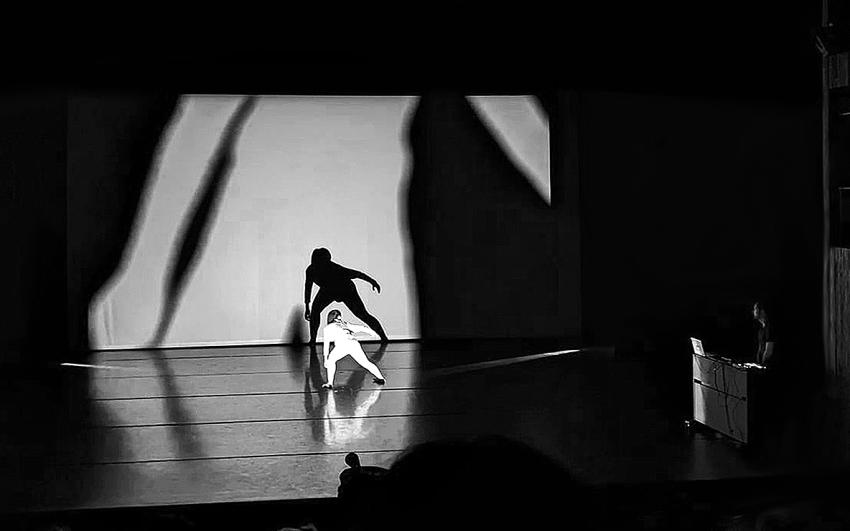That thing is about exposing the unseen reality of living with hidden disability – an autobiographical journey that gives its audience a multi-sensory insight into exactly what disability entails and challenges how the world responds to difference. Lucy Clark (dance artist of fuse collective) reflects on how That thing uses technology to give a deeper insight into the disabled experience and the importance of making work that has an undeniable truth.
When creating That thing, I was really interested in how we could use technology as a collective to 1. visually transport the audience to inside my brain/mind as someone with a chronic illness, and 2. how we could use these projected visuals so that the outcome had a sensory insight into symptoms. There are so many multi-faceted layers to That thing (the personal truth – the story, the diagnosis, the social truth – how people respond to disability culture, and the visceral truth – what it is like bodily to experience a chronic illness/hidden disability) that technology and how this interplayed with the autobiographical audio recordings became very important. It gave us some control over how we could sensorily impact the audience and to me that was very powerful. It brought up questions like how do we purposefully get audiences to zone out and re-enter the performance (a way of imitating disassociation and brain fog)? And within that, how do we do this within the parameters of theatre spaces when there are expectations of audiences to watch and to be engaged? How do we overwhelm the audience? From my perspective, living with chronic illness and hidden disability is an overwhelming experience, both physically and mentally, mainly because everything you are experiencing is invisible to the world. How do you convince people that you are struggling when you look fine? How do you adapt when there are societal barriers that make adapting close to impossible? Finding ways to momentarily overwhelm the audience was important for me in getting across the extent disability changes your livelihood. It’s complex, and dense, and difficult - it’s not always possible to listen to audio recordings, watch me dance, and watch the projected visuals all at the same time and that’s kind of the point. It is overwhelming and I have learnt to be less afraid of making an audience feel that way.
As I have mentioned, this work is largely autobiographical and there is something very interesting about this being a documented moment in my life. The work was created over a year ago and so relearning That thing has almost been a process of archiving the 23 year old me who wrote this and responding from where I stand now at 24. There is a bitterness to how my words are still true because I know I am speaking about something that is unresolvable and still undeniably unseen. Small things have changed and that's reflected in the piece, blending responses from the past and present. A year on, there is still a greater need to consider how we think about disability because the way we respond to difference matters. It is important to remember that disabled stories aren’t just for disabled people. Sharing with such vulnerability has been a process for me which has constantly shifted between deep advocacy and feeling blatantly uncomfortable! I guess there is an element of sharing my story where I forgot I cannot control who is in the audience and how they will respond. As a creator, when something is autobiographical, it can be really difficult to distance yourself from your work. Despite this, I think there is something really valuable to hold onto about being vulnerable and allowing that vulnerability to be a way to connect and advocate.
For me, the most important aspect of That thing is that it speaks truthfully about disabled experiences and that the artistry doesn’t overshadow the realness of what I am talking about. I think we often overlook the impact art can have on the world. For a long time I was told and made to feel like there was no place for me in the dance industry because of my condition. It made me question my worth and it made me feel alone, mainly because at the time I didn’t know any works by disabled artists that spoke about the reality of living with a hidden disability. It was this loneliness that drove me to create That thing, in hope that sharing my reality would raise awareness, make less people feel alone, and allow others like me to feel seen, heard, and represented.
That Thing (Part of Big Bang Scratch Night) is part of SPRINT Festival 2024
Monday 11th March 7.15pm
Tickets £8 - £12
